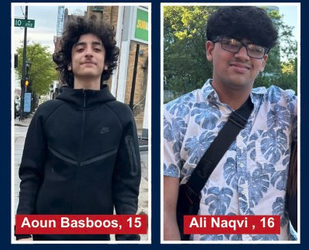As the ceasefire between Israel and Hamas is maintained to halt the destruction in the city of Gaza, a new chapter has been written in the long tragedy of the Levant as hostages have been and are currently being exchanged between the Israeli Defense Force (IDF) and the Palestinian Terror group known as “Hamas.” Throughout the past week, the ceasefire has effectively facilitated a transfer of hostages held by both groups between the two groups, a glint of hope in an otherwise incredibly bleak time.
The hostage situation that now exists in both Israel and the Palestinian territories, including both the West Bank and the Gaza strip exists as a result of the Hamas terror attacks in Jerusalem and Tel Aviv that provoked a massive response by the IDF. The initial attacks by Hamas during a concert in the Israeli region managed to seize over two hundred hostages, which they brought back to their base of operations in the city of Gaza, resulting in a massive IDF force bombing and moving to place the city under their control, to the detriment of its citizens.
Gaza, already under Israeli blockade and deprived of many bare necessities for a decade as a result of Hamas’ control over the city, felt the effects of the response terribly as Israel brought down its might on the city. But most importantly in this case, is that in response to Hamas’ taking of hostages, the IDF took many Palestinian prisoners, with many being Hamas members, but others simply being citizens of the city, further escalating the situation.
Tuesday, the fifth day of a ceasefire between Hamas and the IDF, saw the continuation of a hostage return agreement that has been going on since the ceasefire began. The day saw the release of some of the 240 hostages that Hamas abducted on October 7th, the day of the initial attack by the organization. These hostages reportedly included nine women, a teenage girl, and two Thai citizens that seemed to have been caught up in the violence between the two opposing groups.
On Israel’s behalf, they have reportedly released fifteen Palestinian women, and 15 minors, all of whom were held for days, and had no charges placed against them. Such information was reported by the Israeli foreign ministry in Qatar, as well as the Israeli Prison Service headquartered in the Israeli capital of Tel Aviv. This indicates the mutual cooperation of both parties, albeit, among very reasonable suspicion.
According to the Associated Press, 81 hostages have been released, most of them being Israeli, and 180 Palestinian prisoners have been released. The ceasefire has been effective in facilitating a temporary bout of peace to ease the suffering of the civilian populations of both nations, yet, all know that such an arrangement cannot last forever.
The ceasefire is due to conclude soon, and when fighting resumes, civilians, hostages, and prisoners shall once again be taken and hurt in the war between the two nations, a conflict fundamentally approaching eighty years in age. This brief bout of calm then, is not fated to last forever.
Though terror and violence will return, many retain hope for either an extension for the ceasefire, or perhaps, an indefinite ceasefire to put a pause to the suffering for a longer period of time then what is currently allotted. But the endemic hatred intrinsic to the region since the establishment of Israel at the close of World War 2 is not something that can be so easily cured, and it is perhaps idealistic to think so. Regardless, the news of hostage releases brings hope for many.








